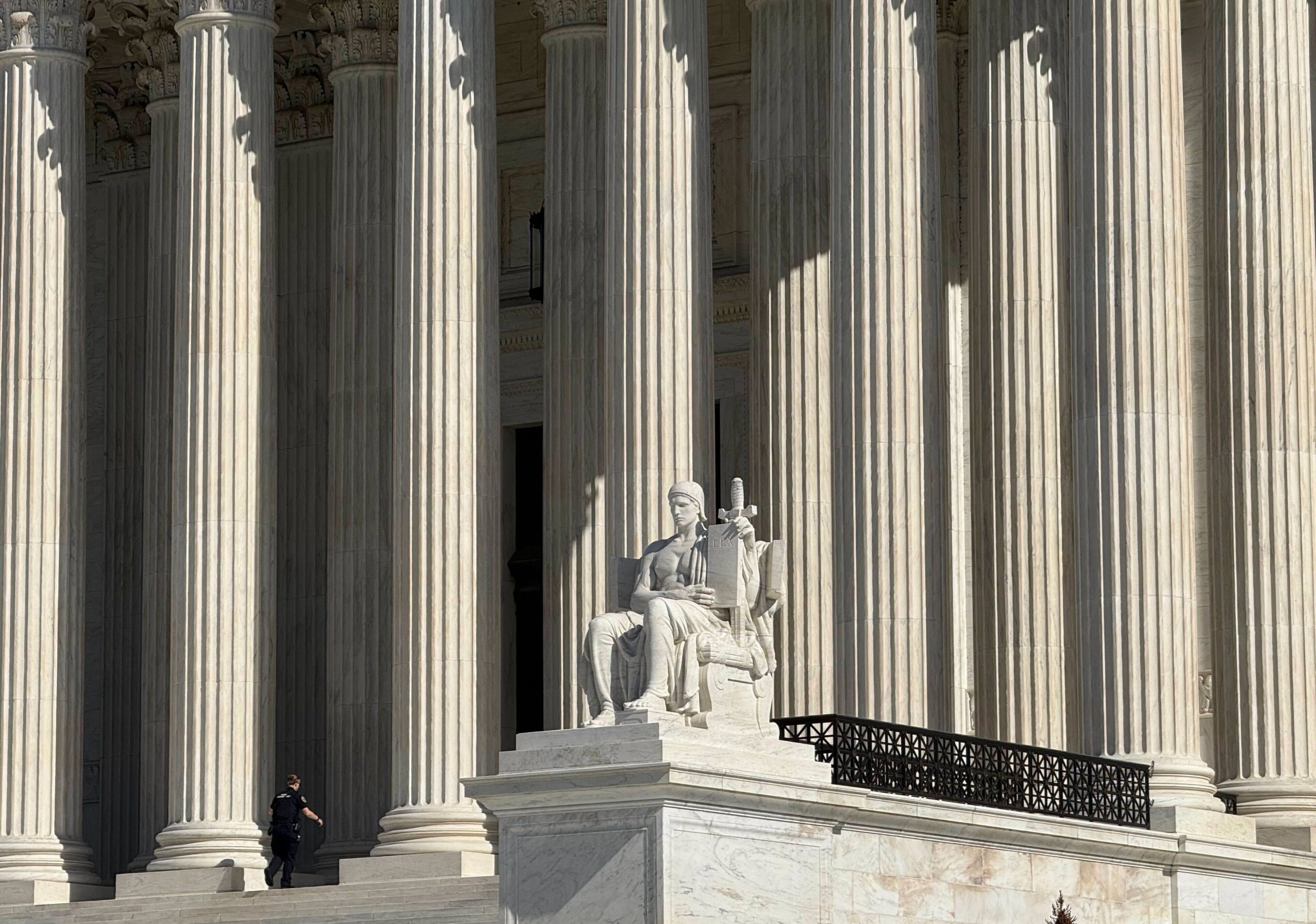Orders to reinstate agency heads on hold as court considers Trumps appeal


Calling the situation untenable, the Trump administration came to the Supreme Court on Wednesday afternoon, asking the justices to block orders by federal judges in Washington, D.C., that instructed government officials to allow board members at two independent agencies to remain in office despite President Donald Trumps attempts to fire them. Soon after, Chief Justice John Roberts issued an administrative stay, which put those orders on hold while the justices consider the governments request, and called for a response by 5 p.m. on Tuesday, April 15.
D. John Sauer, Trumps new solicitor general, told the justices that the dispute raises a constitutional question of profound importance: whether the President can supervise and control agency heads who exercise vast executive power on the Presidents behalf, or whether Congress may insulate those agency heads from presidential control by preventing the President from removing them at will.
Trump, Sauer wrote, should not be forced to delegate his executive power to agency heads who are demonstrably at odds with the Administrations policy objectives for a single day much less for the months that it would likely take for the courts to resolve this litigation.
Sauer asked the justices to put orders by U.S. District Judge Rudolph Contreras and Senior U.S. District Judge Beryl Howell on hold while the Trump administration appeals, as well as an administrative stay
Sauer also urged the justices, whether they grant the governments request to pause the district judges orders or not, to take up the dispute and rule on the merits of the cases, without waiting for the court of appeals to weigh in. Particularly if the district judges orders are not put on hold, Sauer suggested, the justices should order additional briefing and oral arguments in May, with a decision to follow by late June or early July.
The two agencies at the center of the dispute are the Merit Systems Protection Board, which oversees the federal governments personnel practices, and the National Labor Relations Board, which protects the rights of employees in the private sector to join unions.
The MSPB has three members, at least one of which must be from a different political party than the other two. The members, who serve seven-year terms, are appointed by the president and confirmed by the Senate.
There are five members of the NLRB, each of whom is appointed for a five-year term by the president and confirmed by the Senate. Without Wilcox, the current board has only two members Marvin Kaplan, the chair, and David Prouty one short of the three needed for a quorum.
MSPB members can only be removed by the president for inefficiency, neglect of duty, or malfeasance in office. Members of the NLRB can only be removed upon notice and hearing, for neglect of duty or malfeasance in office, but for no other cause.
Cathy Harris was appointed to the MSPB in 2022 by then-President Joe Biden for a term that was slated to expire in 2028. She became the chair of the agency in 2024. During her time in that role, the MSPB cleared almost its entire backlog of nearly 4,000 cases that had built up since 2017.
After Trump fired Harris on Feb. 10 of this year, she went to federal court, arguing that her termination violated federal law.
U.S. District Judge Rudolph Contreras ruled for Harris, agreeing with her that the removal protections provided to members of the MSPB are constitutional under Humphreys Executor v. United States, a 1935 Supreme Court decision holding that although a president can generally fire subordinates for any reason, Congress can create independent, multi-member regulatory agencies whose commissioners can only be removed for cause. Contreras ordered the Trump administration to allow Harris to continue to serve until her term expires.
The Supreme Courts recent decisions in Seila Law v. Consumer Financial Protection Bureau, holding that for cause restrictions on the removal of the CFPB director violate the Constitution, and Collins v. Yellen, striking down limitations on the presidents ability to remove the director of the Federal Housing Finance Agency, do not affect the constitutionality of for-cause removal provisions for multimember bodies of experts heading an independent agency, Contreras explained. To the contrary, he stressed, the Supreme Courts reasoning in Seila Law reaffirmed the constitutionality of such boards, as those agencies have a robust basis in this countrys history, and their members lack the power to act unilaterally. And the MSPB is precisely the kind of board protected under Humphreys Executor, Contreras continued, because it does not wield substantial executive power but rather spends nearly all of its time adjudicating inward-facing personnel matters involving federal employees.
Gwynne Wilcox was appointed to the NLRB in 2021 by Biden, and then appointed to a second term in 2023. When Trump fired her on Jan. 27, 2025, he said that she had not been operating in a manner consistent with the administrations objectives, had issued decisions that had vastly exceeded the NLRBs powers, and that he did not have confidence that she could fairly evaluate matters before the board or that she would faithfully execute the law governing the board.
Wilcox went to federal court in Washington, D.C., seeking to be returned to office. She argued that her termination violated the federal law governing removal of NLRB members.
Senior U.S. District Judge Beryl Howell ruled that Wilcox had been illegally fired, and she barred Kaplan from removing Wilcox or interfering with her ability to carry out her duties. Howell concluded that Humphreys Executor was not only binding law, but also a well-reasoned reflection of the balance of powers sanctioned by the Constitution. Moreover, she added, the power of the current NLRB is, if anything, less extensive than that of the FTC at the time of the courts decision in Humphreys Executor.
A divided three-judge panel of the U.S. Court of Appeals for the District of Columbia Circuit paused both judges orders. However, the full D.C. Circuit by a vote of 7-4 lifted those orders, allowing Harris and Wilcox to continue exercising the Presidents executive power over the Presidents express objection, the Trump administration contends.
Humphreys Executor does not bar the president from removing members of the MSPB and NLRB, Sauer asserted in his filing on Wednesday. In Humphreys Executor, Sauer explained, the court recognized a narrow exception to the Presidents removal power that, properly construed, extends only to multimember expert agencies that do not wield substantial executive power. But that is exactly what the MSPB and the NLRB do, Sauer insisted, by implementing and enforcing federal labor and civil-service laws.
Lower courts, in ordering reinstatement of Harris and Wilcox, contended that Humphreys Executor is still good law, and they could not overrule it. The Supreme Court cautioned, the government continued, in Seila Law that Humphreys Executor is not a freestanding invitation for Congress to impose additional restrictions on the presidents power to remove executive officials.
But if for-cause removal laws like the ones at issue in these cases are constitutional under Humphreys Executor, Sauer added, it plans to ask the Supreme Court to hold, after receiving full briefing and argument, that the case was wrong and should be overturned. But in any event, Sauer noted, the district courts orders should be put on hold for now even under a narrower reader of Humphreys Executor.
And in any event, Sauer continued, a stay of the orders by Contreras and Howell is also warranted because federal courts do not have the power to order the return of agency heads fired by the president in fact, no court has ever done so until this year. The courts intervention in these cases, Sauer wrote, has thus thrown the NLRBs and MSPBs operations into chaos, cast a cloud on the lawfulness of the agencies actions, left the President and the Senate uncertain about whether and when they may install new officers to succeed Wilcox and Harris, and undermined the steady administration of the laws that the Constitution seeks to secure.
This article was originally published at Howe on the Court.
Posted in Emergency appeals and applications, Featured
Cases: Trump v. Wilcox
